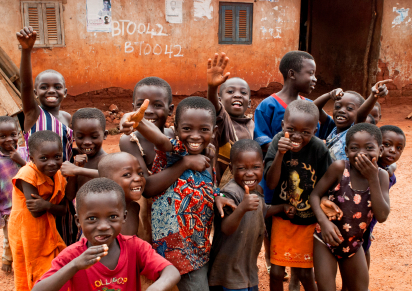
** Next week, I will be headed to Ghana, Africa to see some the similarities of language development and language learning across cultures first hand. In coordination with Columbia University, a group of graduate students and licensed speech-language pathologists will be working in hospitals, schools, and clinics to share our knowledge and practice in three different cities/villages in Ghana. Stay tuned for updates and recaps from the trip in the coming weeks **
Language is the one thing that diversifies humans among other species. This complex knowledge and use of a set of sounds, rules, and social exchange is probably one of the most difficult things we have to learn.
Although each language can be very different, researchers have found that our children are learning language in the same ways. Many children around the world are hearing motherese as their first exposures to spoken words.
Globally, infants are babbling around the same time (between 5 and 7 months). Our babies combine consonants and vowels in a repetitive manner (e.g. babababa) as they begin to learn to use their sounds for communication.
Researchers have identified different consonant+vowel combinations, including “mamama,” “dadada,” and “gagaga,” that babies used across different languages. They found that babies were all using the same form of babbling in the U.S., Sweden, Portugal, Korea, Japan, France, Holland, North Africa and Ecuador.
Studies show that even infants who learn language visually, such as American Sign Language (ASL), use “manual babbling,” repetitive movements with use of their hands that take on similar characteristics to signed words.
Remarkably, language development isn’t the only area that babies are all similar. If you haven’t seen it already, check out Babies, a documentary that looks at the development of four infants all around the world from birth to 1 year. Its incredible how even across cultures, parents and kiddos are acting parallel around the globe.
